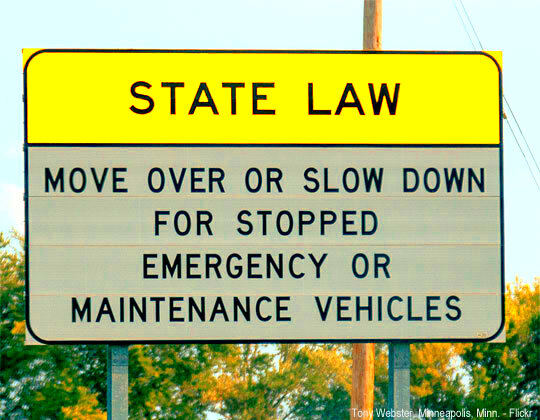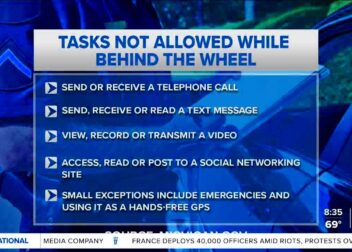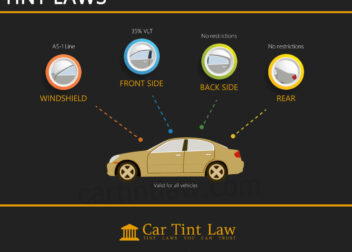Move Over Law in Pennsylvania: A Legal Overview for Drivers
The Move Over Law in Pennsylvania is designed to protect emergency responders and other vehicles on the roadside. This law requires drivers to change lanes or slow down when they see flashing lights on the side of the road. Understanding this law is crucial for every driver in the state, as it not only helps ensure the safety of those working on the road but also keeps you and your passengers safe.
Purpose of the Move Over Law
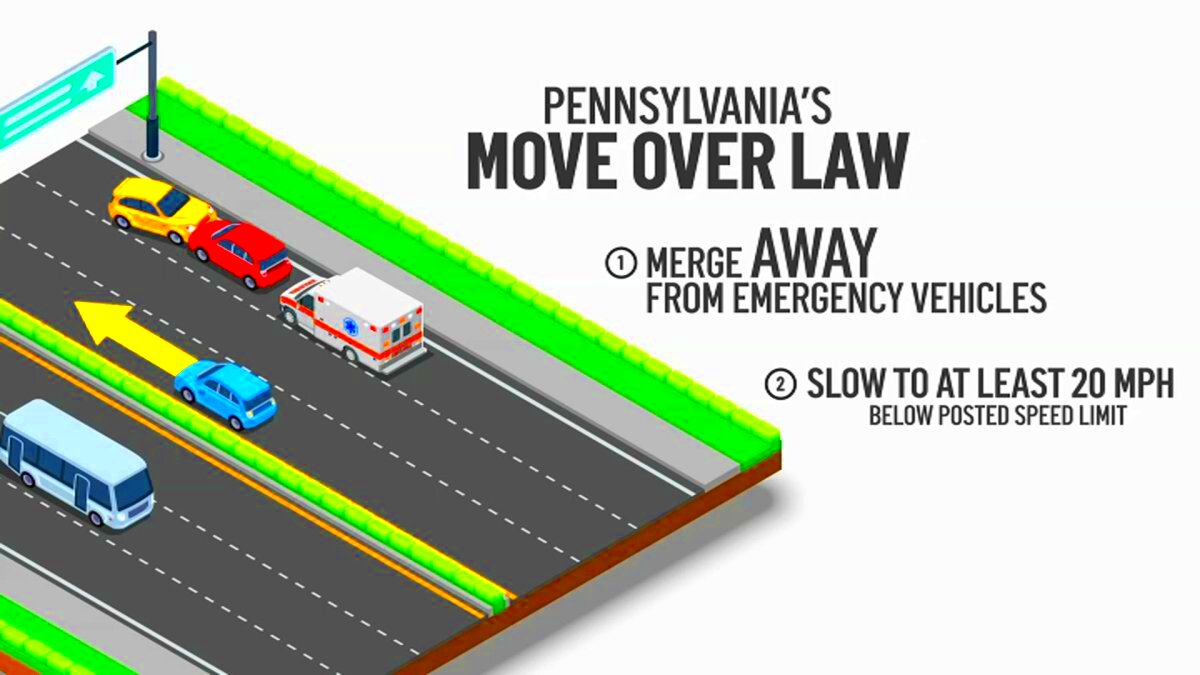
The primary purpose of the Move Over Law is to enhance safety for emergency responders, including police officers, firefighters, and tow truck operators. When vehicles are stopped on the roadside with their lights flashing, they are often in potentially dangerous situations. Here are a few key points about the law’s purpose:
- Protection of Emergency Personnel: The law aims to reduce the number of injuries and fatalities among emergency responders who are working on the road.
- Awareness of Road Conditions: It encourages drivers to be more aware of their surroundings, especially in emergency situations.
- Promoting Safe Driving Habits: The law promotes a culture of safety on the roads, reminding drivers to prioritize safety over speed.
Who Needs to Move Over
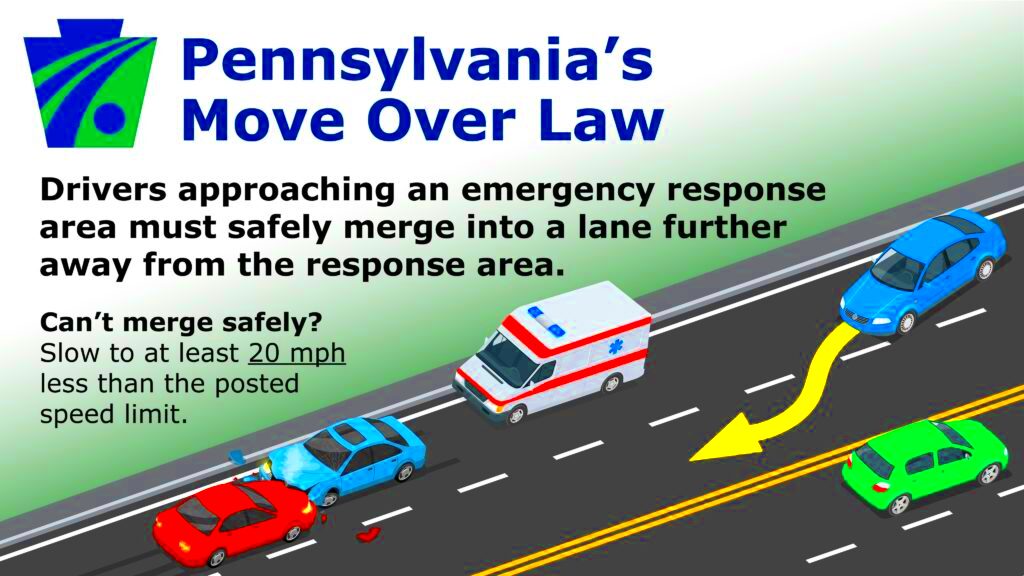
Under Pennsylvania’s Move Over Law, certain vehicles and personnel require drivers to either change lanes or slow down. Here’s a list of who falls under this law:
- Police Vehicles: Any vehicle with flashing lights, typically belonging to law enforcement agencies.
- Emergency Medical Services (EMS): Ambulances and other emergency medical personnel responding to a call.
- Fire Trucks: Fire department vehicles that are attending to emergencies.
- Tow Trucks: Vehicles that are assisting with disabled cars or accidents.
- Roadside Assistance Vehicles: Any vehicle providing help to motorists on the road.
It’s essential for all drivers to be aware of these categories and respond appropriately to flashing lights. Failing to do so not only puts others at risk but can also result in penalties for non-compliance with the law.
Penalties for Not Complying with the Move Over Law
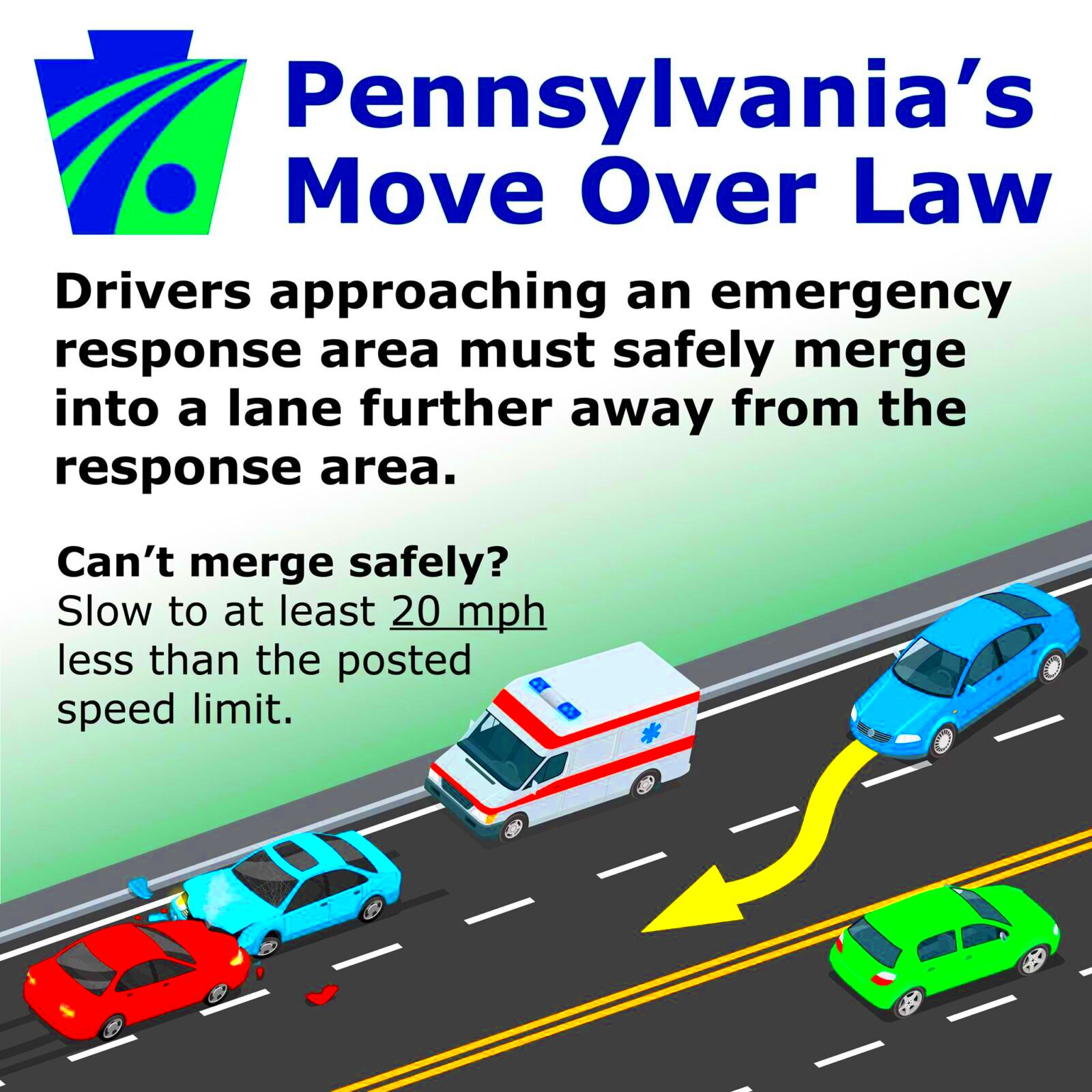
Ignoring the Move Over Law in Pennsylvania can lead to significant penalties. Law enforcement takes this law seriously, and violations can have serious consequences. Here’s a breakdown of what happens if you fail to comply:
- Fines: The most immediate consequence of violating the Move Over Law is a fine. Depending on the situation, fines can range from $100 to $500.
- Points on Your License: Violations can also lead to points being added to your driving record. Accumulating too many points can result in further penalties, including potential license suspension.
- Increased Insurance Rates: Getting a ticket for violating this law can lead to higher insurance premiums, as insurers often consider traffic violations when calculating rates.
- Increased Liability: If an accident occurs because a driver fails to move over, they could face liability for any injuries or damages that result.
These penalties are in place to encourage drivers to take the Move Over Law seriously and to protect those working on or near the roads.
Exceptions to the Move Over Law
While the Move Over Law is strict, there are some exceptions to keep in mind. Understanding these exceptions is crucial for all drivers. Here are the key situations where the law may not apply:
- When It’s Unsafe: If moving over poses a danger to the driver or other road users, they are not required to change lanes.
- Traffic Conditions: In heavy traffic, where changing lanes may not be possible, drivers may not need to comply.
- When Directed by Law Enforcement: If a law enforcement officer directs a driver otherwise, their instruction takes precedence over the Move Over Law.
It’s essential for drivers to use their best judgment in these situations. However, even in exceptions, slowing down is often still a good practice.
How the Move Over Law Affects Drivers
The Move Over Law significantly impacts how drivers operate their vehicles on Pennsylvania roads. Understanding this law can help create a safer environment for everyone. Here are a few ways the law affects drivers:
- Increased Awareness: Drivers become more aware of their surroundings, especially when they see emergency lights, leading to safer driving habits.
- Responsibility: Drivers are reminded that they share the road with emergency personnel and must take responsibility for their actions.
- Education on Road Safety: The law promotes public awareness campaigns that educate drivers about the importance of moving over for emergency vehicles.
- Better Traffic Flow: By moving over or slowing down, drivers contribute to smoother traffic flow, reducing the likelihood of accidents.
Ultimately, adhering to the Move Over Law not only protects emergency responders but also helps create a culture of safety that benefits all road users.
Awareness and Education Efforts
Raising awareness about the Move Over Law is essential to ensure that drivers understand its importance and comply with it. Various organizations, including local law enforcement, safety advocates, and government agencies, have taken significant steps to educate the public. Here are some key efforts:
- Public Campaigns: Many municipalities launch public awareness campaigns to inform drivers about the Move Over Law. These campaigns often include posters, social media messages, and radio advertisements.
- Community Events: Safety organizations often hold community events, such as safety fairs and demonstrations, to teach people about safe driving practices and the importance of moving over.
- Training for Drivers: Some driving schools incorporate information about the Move Over Law into their curriculum, ensuring that new drivers are educated on this crucial rule from the start.
- Partnerships with Emergency Services: Collaborations between law enforcement and emergency services can help facilitate workshops where first responders share their experiences and the dangers they face on the road.
These efforts aim to foster a culture of safety and respect for those working on the roadside. By increasing awareness, we can help prevent accidents and save lives.
Recent Changes and Updates to the Law
The Move Over Law in Pennsylvania has undergone some updates to enhance its effectiveness and ensure better compliance. Staying informed about these changes is crucial for all drivers. Here are some recent updates:
- Expanded Definitions: Recent amendments have expanded the definition of “emergency responders” to include more types of vehicles, such as construction vehicles and tow trucks, further protecting those who work on the roads.
- Increased Penalties: Some changes have led to stricter penalties for violations. Fines may be higher, and the points system has been reevaluated to emphasize the law’s seriousness.
- Enhanced Enforcement: There has been a push for increased law enforcement presence to ensure compliance, especially during busy travel times and in areas with high incidents of roadside emergencies.
By keeping up with these changes, drivers can better understand their responsibilities and contribute to safer roadways.
FAQs About the Move Over Law in Pennsylvania
Understanding the Move Over Law can raise many questions among drivers. Here are some frequently asked questions that can help clarify common concerns:
| Question | Answer |
|---|---|
| What should I do if I see flashing lights? | You should either move over to an adjacent lane or slow down if it’s unsafe to change lanes. |
| Are there any exceptions to the law? | Yes, if it’s unsafe to move over or if traffic conditions prevent it, you may not need to comply. However, slowing down is still a good idea. |
| What are the penalties for violating the law? | Penalties can include fines ranging from $100 to $500 and points on your driving record. |
| Does the law apply to all emergency vehicles? | Yes, the law applies to police vehicles, ambulances, fire trucks, and other roadside assistance vehicles. |
By knowing the answers to these questions, drivers can navigate the law more effectively and contribute to a safer driving environment.
Conclusion and Final Thoughts
The Move Over Law in Pennsylvania is a vital measure aimed at ensuring the safety of emergency responders and all road users. By understanding the law, its purpose, and the penalties for violations, drivers can contribute to a safer roadway environment. It’s important to recognize the ongoing awareness and education efforts that help inform the public about their responsibilities under this law. As the law continues to evolve, staying informed about recent changes is crucial for all drivers. Ultimately, practicing safe driving habits by moving over for emergency vehicles can save lives and foster a culture of respect and safety on the roads.
